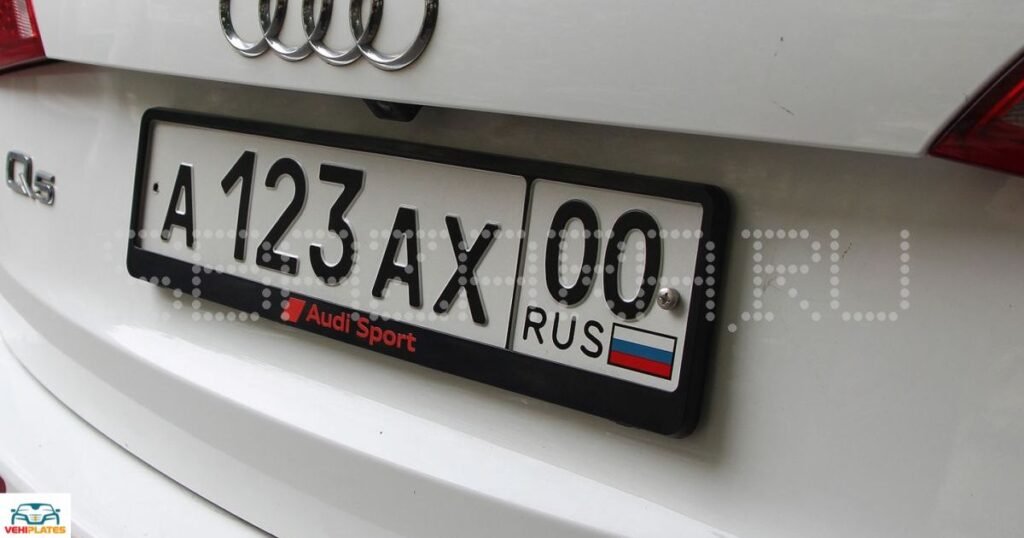A Dead License Plate refers to a license plate that is no longer valid or in use. When a license plate is expired, damaged, or otherwise unusable, it is considered dead. This could happen due to the expiration of the registration, loss, theft, or physical damage to the plate.
This intriguing question may lead you to discover the hidden stories behind these seemingly lifeless metal plates. What Is A Dead License Plate? Beyond their apparent simplicity, dead license plates carry tales of expired registrations, vehicle changes, and perhaps even instances of unexpected adventures.
Dead License Plates are more than just expired pieces of metal they often serve as relics of a vehicle’s past. Each plate holds a history, reflecting changes in ownership, geographical locations, and, in some cases, sentimental value.
Understanding Dead License Plates
Dead license plates refer to plates that are no longer valid or in use. These plates might belong to vehicles that are out of service, scrapped, or have changed registration. Dead license plates may also pose security concerns, especially if they are used for illegal activities, making their recognition and management an important aspect of maintaining public safety.
To deal with dead license plates effectively, authorities often rely on automated license plate recognition (ALPR) systems that can quickly scan and identify plates.
How Dead License Plates Affect Vehicle Owners

Dead license plates can spell trouble for vehicle owners in various ways. They may lead to legal consequences, as expired or inactive plates violate registration laws. Law enforcement can issue tickets or fines, and in some cases, the vehicle may be impounded.
The impact of dead license plates extends beyond legal and security concerns, it also affects the overall functionality of the vehicle. Vehicles with expired plates may face difficulties in routine activities like parking, toll booth passage, or crossing border checkpoints.
The Life Cycle of License Plates
The life cycle of license plates encompasses production, issuance, and retirement. Plates start as raw materials, undergo manufacturing, and then get distributed to vehicle owners. Throughout their use, plates serve as identifiers, aiding law enforcement and ensuring compliance.
The journey of license plates reflects technological advancements and evolving design trends. From traditional embossed metal plates to modern digital or reflective materials, the life cycle continually adapts. This evolution mirrors changes in security features, registration processes, and aesthetic preferences, shaping the history and future of license plates.
Common Causes of License Plates Going Dead

License plates can become “dead” or illegible due to various common causes. Exposure to harsh weather, like extreme sunlight or heavy rain, can lead to fading, making the plate difficult to read. Rust and corrosion are frequent culprits, especially in regions with salted roads.
Neglecting to clean and care for license plates can exacerbate the problem. Accumulated dirt, grime, and road salt can obscure the characters on the plate, making it challenging for automated systems or individuals to decipher the information accurately.
Regular cleaning and inspection are essential practices to mitigate these common causes of license plates going dead, promoting both safety and proper identification on the road.
What Constitutes a Dead License Plate?
A dead license plate typically refers to one that is inactive or expired. When a vehicle owner fails to renew their registration, the license plate becomes dead, indicating that it’s no longer valid. This status often arises due to neglect or administrative lapses, leading to legal consequences and potential fines for driving with an expired plate.
A dead license plate poses problems for law enforcement and traffic authorities, as it signifies a lack of compliance with vehicle registration requirements. The expiration of a license plate indicates that the associated vehicle may not meet current safety or emissions standards, posing potential risks on the road.
Reviving Dead License Plates

Reviving dead license plates can be a meticulous process involving restoration techniques. Over time, license plates may deteriorate due to rust, wear, or damage. This degradation not only affects their aesthetic appeal but may also impact their legal validity.
Whether for vintage collectibles or legally expired plates, the revival process requires careful consideration of materials and methods.
Some enthusiasts engage in DIY projects, employing rust removal techniques and specialized paints. Curious about the process of obtaining Mexican license plates?
What You Need to Know About Dead License Plates
Dead license plates refer to plates that are no longer valid or in use. They may belong to vehicles that have been scrapped, decommissioned, or simply no longer on the road. Understanding the status of dead license plates is crucial for various reasons, including law enforcement and tracking vehicle history.
In many jurisdictions, individuals are required to surrender or properly dispose of expired or decommissioned plates to avoid misuse. The knowledge of dead license plates is valuable for authorities in managing records, identifying abandoned vehicles, and ensuring accurate data in licensing systems.
Dead License Plate Concerns
Dead license plates pose a range of issues, from legality concerns to potential security risks. Expired or inactive plates may result in traffic violations and fines, as driving with an expired plate is often against the law.
Avoiding dead license plate concerns involves regular plate renewal and staying informed about expiration dates. Responsible vehicle ownership includes keeping registration and insurance up to date. Timely renewal not only prevents legal consequences but also contributes to road safety and security.
FAQ’s
What does it mean when a license plate is dead?
When a license plate is dead, it means it’s no longer in use or registered with the relevant authorities.
How can a license plate become dead?
A license plate can become dead if the vehicle it was assigned to is no longer in operation, scrapped, or if the registration is not renewed.
Can a dead license plate be reused?
Authorities typically retire dead license plates from circulation and may recycle or dispose of them, as they cannot be reused.
Conclusion
A dead license plate goes beyond a mere bureaucratic concern, it holds implications for legality, road safety, and personal security. The expiration of a license plate may lead to legal consequences, such as fines and violations, making timely renewal a pivotal responsibility for vehicle owners.
The significance extends beyond the realm of law, as a dead license plate can be exploited for nefarious activities, raising concerns about identity theft and criminal misuse.
To navigate these issues successfully, individuals must prioritize the timely renewal of their license plates, not only as a legal obligation but as a crucial step in upholding road safety, maintaining compliance, and safeguarding personal security.










